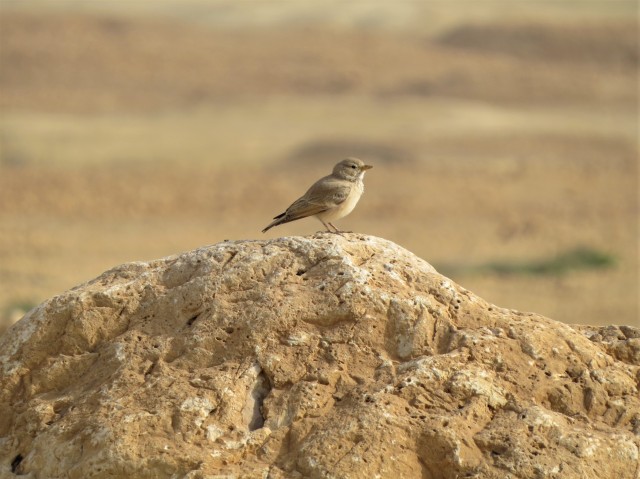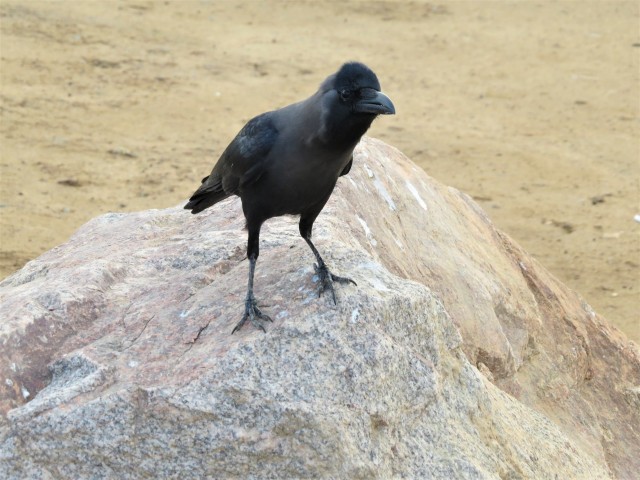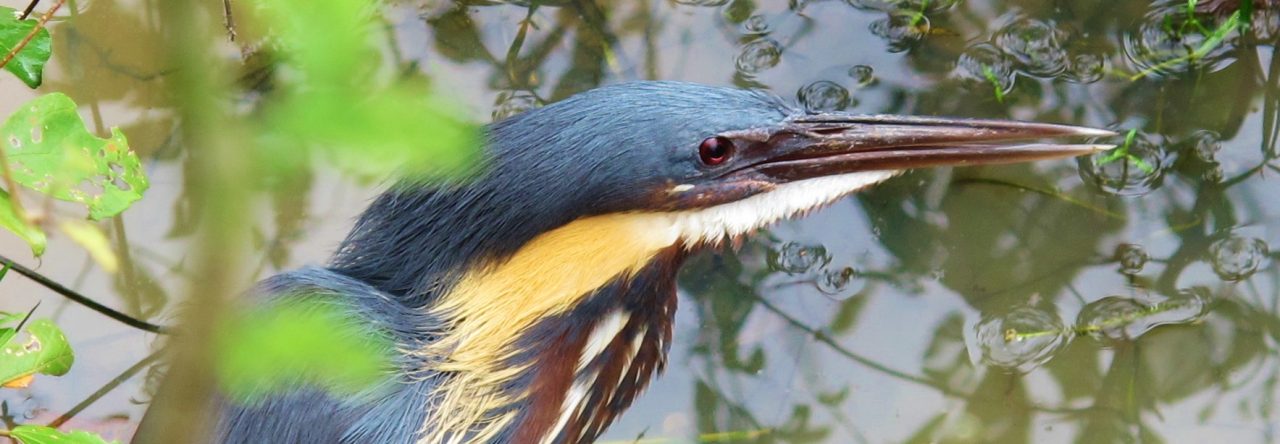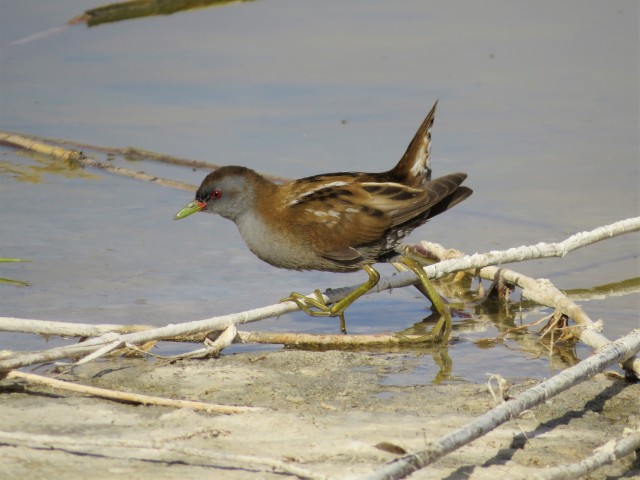
This one wasn’t a birding trip, but – naturally – I had my eye on a few Western Palearctic species that I needed for my list! In the end, I scored with 15 life birds and an additional 5 Western Palearctic ticks, taking my life and Western Palearctic totals to 2,381 and 546, respectively.
I was most excited about heading to Eilat, which had been my dream destination when I was cutting my teeth as a young birder in Europe. However, maybe I am getting jaded in my old age – and I was definitely too early in the season for proper migration – but Eilat didn’t really have the “wow” factor I had been anticipating.
The desert areas to the north of Eilat were especially tough to bird, with one visit to Amram’s Pillars yielding literally nothing at all, neither seen nor heard, apart from a few passing Pallid Swifts and Rock Martins overhead – which, let’s face it, could have flown over almost anywhere!
On the other hand, desert birding in Wadi Mishmar, near Ein Gedi on the shores of the Dead Sea, was unexpectedly good – and produced most of the specialties over a couple of visits.

Birding locations:
Tel Aviv and Jerusalem: Both cities harbored a quite surprising variety of birds. In Tel Aviv, the seafront area produced my first Armenian Gulls, there were Palestine Sunbirds and White-spectacled Bulbuls in the leafier streets – and even a Hoopoe probing the turf along the promenade, oblivious to the hordes of people passing nearby.
Jerusalem’s Bird Observatory, centrally located in Sacher Park, is a well-known migration spot, and although I was a little early for spring migrants, there was still plenty to see (although unfortunately I did not connect with the wintering Pine Bunting there).
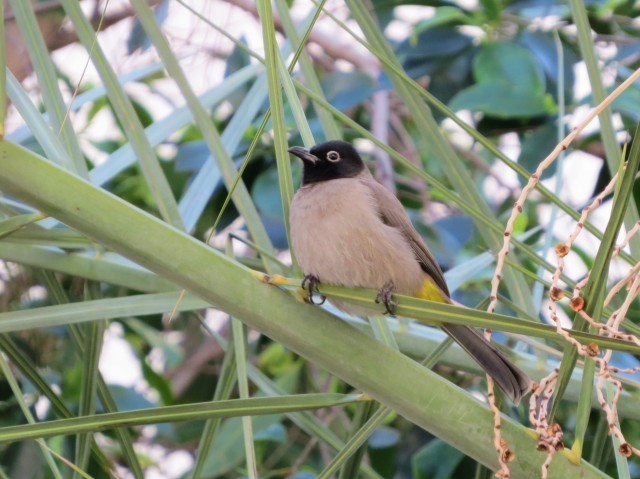
The Sea of Galilee: The highlight here was great looks at hulking, stunning Pallas’s Gulls in breeding plumage – a five-star Western Palearctic tick and surely one of the most impressive gulls in the world. The whole area was quite rich in birds, especially in the hills on the Golan Heights side of the lake, where Long-billed Pipit was a target lifer (scored!) and I also encountered a singing Clamorous Reed Warbler in the reeds along the eastern shore.
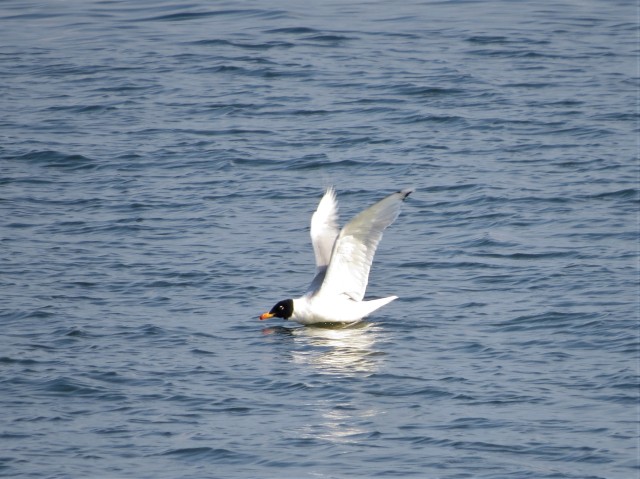
The Eastern valleys along the Jordan border: We were just driving through this area, and I wish I could have spent more time here. An hour in the Gesher Fishponds area produced over 50 species including plenty of shorebirds, both Dead Sea and Desert Sparrows, several migrating Black Storks, and a Booted Eagle.
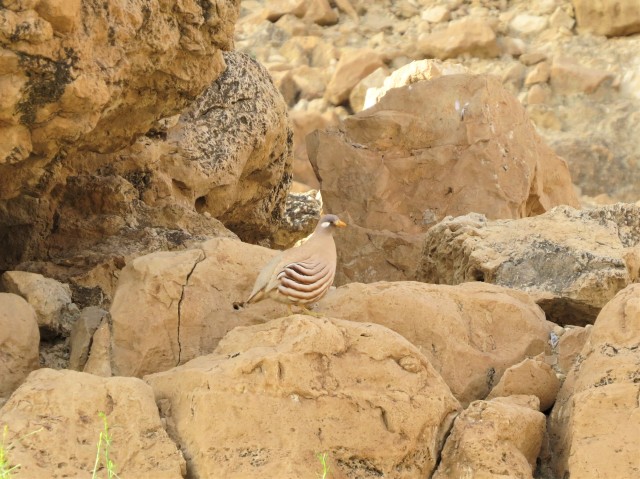
Wadi Mishmar, near Ein Gedi: Two visits – late afternoon, and early the following morning – turned up 24 species, which for a desert is a good tally. I found many birds here that I saw nowhere else on the trip, including Sand Partridge, Fan-tailed Raven, Trumpeter Finch, Striolated Bunting, Scrub Warbler, Cyprus Warbler, and Arabian Babbler.

Eilat: The highlight here was undoubtedly the two Black Scrub-Robins in Samar, about 25 minutes north of Eilat, which were overwintering in a dense patch of desert scrub and have been enjoyed by many birders. This is one of the most sought-after of all Western Palearctic species, and is only irregularly found in the region.
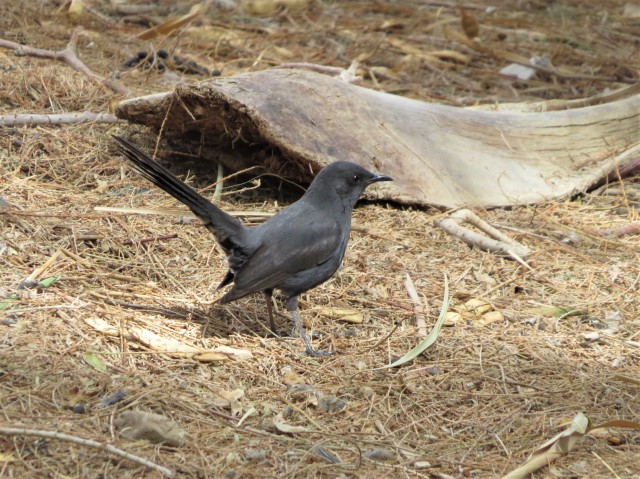
The International Birding and Research Center in Eilat was good for close views of Little Crake among a fairly wide range of species, and it obviously has a lot of potential as a migrant hotspot in April. However, the North Beach failed to yield White-eyed Gull, which I had falsely assumed was a “gimme” here!
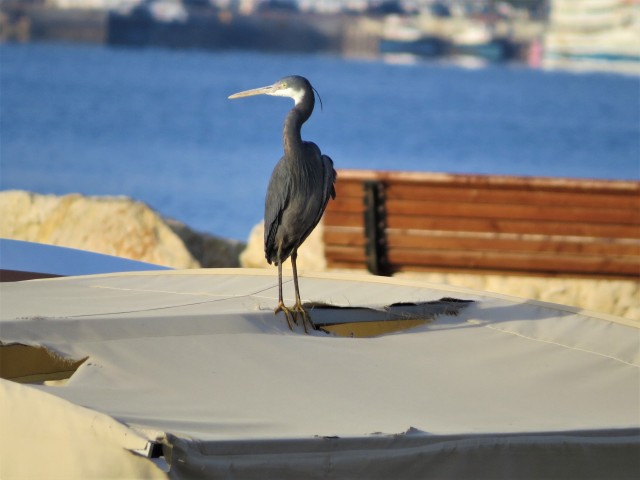
Overall, I saw 120 species in two weeks, even though I was “non-birding” the majority of the time. Israel can definitely be recommended as an easy, comfortable birding destination with good infrastructure and a wide range of species in a relatively small area – not to mention a handful of Western Palearctic specialties which can be hard to find anywhere else in the region.

